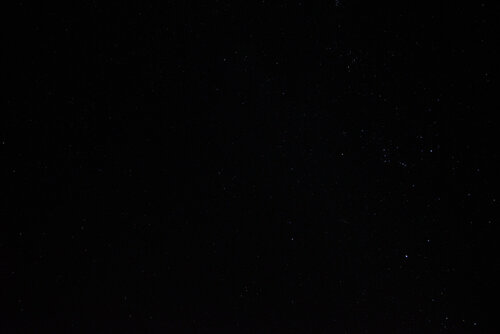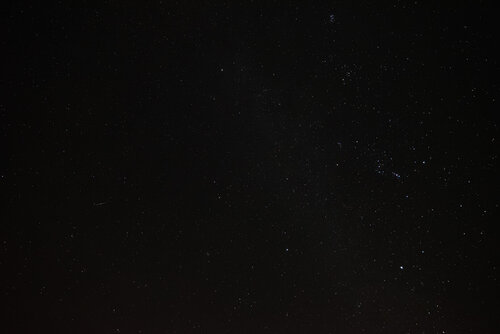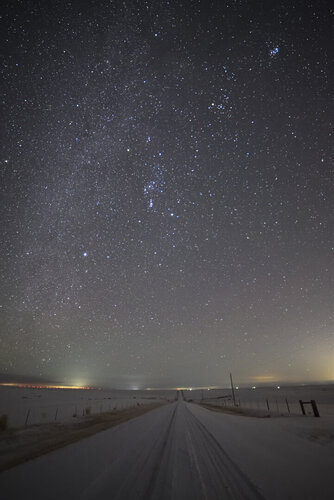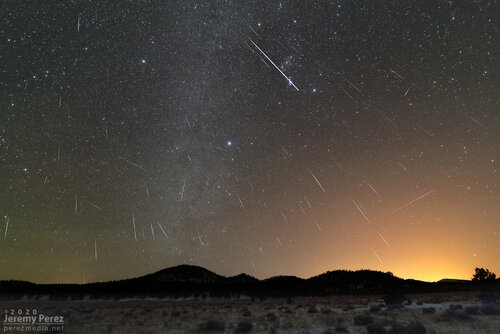Seeing clouds clearing late evening after the snow yesterday, I zoomed out to far eastern Arapahoe County, settling a mile or two south of U.S. 36 northeast of Deer Trail. It was creepy enough being out there after a fresh snow; not only was it cold as balls, but there was spotty freezing fog competing with the occasional cloud decks east of Denver, and I oftentimes could not discern sky from ground where I was, so I wasn't always sure what I was looking at. Somehow I managed to get about an hour or so of nearly pristine clear skies with little fog, but a nearby power line was almost constantly snapping and buzzing behind me.
I saw probably 30 or so Geminids in around an hour, and I was impressed by their angular coverage in the sky -- I saw them in all quadrants except straight west. They also literally seemed to be radiating from Gemini, which, even though that's how most meteor showers work and get their name, I almost never can discern from what I see. Not the case here. What did not impress me was the lack of bigger/brighter ones. Some of them I could barely see even when looking right at them in the rural darkness.
Even though I had my shutter open and pointed in the direction of several that I could see with my feeble human eyes, I found very few showed up in my shots. Not sure what is going on here...as they looked plenty bright to me, but they show up quite dim from a Nikon D750, which seems at odds with what I see in others' photos. Are those other photos enhanced in some special way? Are they fireballs instead?
Lower right quadrant (closer to center than corner)

This one (left center) looked quite big to me at the time, but looks pathetic on camera:

Ultimately I had as good a time photographing wintertime constellations as I did seeing meteors. After about 60 minutes in the 10 F cold, (even with apparel and taking 5-10 minute breaks in my car pumping the heat) I had had enough by 12:30 or so, especially as a fresh cloud bank started encroaching from the east.

I may try again tomorrow to catch the peak night in the hopes of more activity. However, the cloud cover situation in NE CO continues to look iffy. Might have to hope for a break in the cloud streets as the most recent CAM forecasts are indicating.




